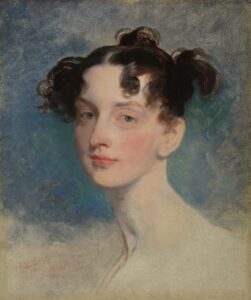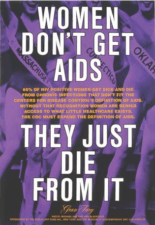When researching diplomatic challenges in early nineteenth century Europe, such as the Eastern Question or the Congress of Vienna, the subject matter can appear male dominated. The former refers to the disintegration of the Ottoman Empire in the 19th century, and the latter to the peace-making efforts at the end of Napoleons reign over Europe.[1] And yet, if one digs deeper, women’s experiences can be found. Bourgeois, noble or royal women like Princess Dorothea von Lieven, Germaine de Staël, Russian Grand-Duchess Catherine and the Duchesse de Dino can be seen holding court with notable statesmen and diplomats, hosting salons and influencing international decision-making.[2] But why are these women not as well-known as their male counterparts? If the few accessible sources on these women are analysed, a pattern comes to light. This pattern is divided into three existing historiographical phases, which will be discussed in this blog post.
Examining these phases shows that women’s diplomatic work has not been fully recognised. As a result, this blog post suggests a fourth historiographical phase to ensure diplomatic agency can be given back to these nineteenth-century European women. This can be done by breaking down the formal-informal divide between their work and that of their male counterparts, as introduced in the third phase.
Dorothea Lieven (1785-1857) is the main focus in this research, functioning as a case-study. She was a noblewoman who was originally from the Baltic region, but married Russian Count and General Christopher Lieven. Her husband was assigned to the Russian Ambassador’s post in London in 1812, where she was given the title of ambassadrice. The couple stayed in London until 1834, when they were called back to Russia.[3] The ambassador and his ambassadrice were so successful in their work that they received the titles of prince and princess, making her Princess Dorothea von Lieven.[4]

The First Three Historiographical Phases
There are many different accounts from Dorothea Lieven’s contemporaries, which shape the first ‘phase’ of her historiography. She had frequent meetings with statesmen like Metternich, French foreign minister François Guizot, multiple British prime ministers, British foreign secretary Viscount Castlereagh and numerous kings and diplomats.[5] Nesselrode, the Russian foreign minister, even preferred Dorothea’s reports on European politics and personalities over her husband’s.[6] Most of all, she was respected for her diplomatic efforts and the steps she made for religious-based humanitarian interventions during the Greek War of Independence in the 1820s.[7] But there are also reports on her from popular media, calling the Princess mischievous, arrogant and insufferable.[8] She disliked non-political academics and showed this openly, which worsened the situation and caused them to return the sentiment.[9]
Academics continued to dislike her after her death, which heavily influenced sources available on the Princess Lieven and make up the second ‘phase’: the ‘negative narrative’. They portray her as a gossip-loving, power-hungry maneater, questioning her capabilities.[10] Some suggest that she was active in the diplomatic field, but mostly as a messenger or a spy, not as a real diplomat.[11] The biggest critiques are on her femininity; she is supposedly very feminine in her disingenuous nature, inconsistency and difficultness.[12] This second phase contains narrative that downplays Dorothea Lieven’s diplomatic and political agency after her death, solely based on her femininity.
A new ‘positive narrative’ comes up during the 2000s. Historians start recognising her possible power in nineteenth-century European politics, the first of whom was John Charmley. He suggests that we should see her as part of a web of women who influenced ‘real’ politicians behind the scenes, in more private spaces. He recognises her passion and nose for diplomacy but describes it as ‘informal’ power, implying that she is not part of ‘formal’ power structures like her male counterparts.[13] Historian Glenda Sluga continues this narrative by arguing that women like Dorothea were important to the forming of foreign policy and new norms of international politics.[14] But Sluga still mentions that their positions fall into the informal realm, thereby downplaying these women’s work.[15] This is where Dorothea Lieven’s current historiography ends, in the third ‘phase’.
A Fourth Historiographical Phase
Princess Dorothea von Lieven is not considered a professional diplomat, due to this label of informality assigned to her. The line between formal and informal could be drawn by looking at who is or is not embraced and recognised by the diplomatic system and its major players. When we look at Lieven’s track record, we see her getting praise from Europe’s most prominent statesmen, such as well-known diplomats and politicians like Nesselrode and Metternich, or even the Russian Tsar and the British king. They all celebrated her accomplishments and trusted her with European diplomatic missions.[16] Being praised and trusted by these political figures would be highly unlikely if they did not recognise her as one of them. This would mean that she did belong in the realm of people with formal diplomatic and political power.
When this divide is examined in more detail, other challenges arise. This is seen in the gendered critiques Dorothea received, which never commented on her effectiveness as a diplomat, but rather on her femininity. Moreover, historians such as Jeroen Duindam show that there were never explicitly separate spheres for men and women when working for the state in the early nineteenth-century.[17] Drawing a line separating ‘formal’ and ‘informal’ diplomats in the early nineteenth-century, simply based on their gender alone, does not do these women justice.
A fourth phase arises in the historiography of Dorothea Lieven and other politically and diplomatically active women in the nineteenth-century. After looking at its origins and traits, the formal-informal divide seems to be an unnecessary addition to our historical retellings. By dismantling this divide between women and men in the diplomatic field of early nineteenth-century Europe, we can start to break down past assumptions about women like Dorothea Lieven.
Bart Mooibroek is a student in his second year of the bachelor’s degree in history at Utrecht University, specialising in the history of international relations, globalization and world order. This blog post is based on a shortened version of his part in a greater group project on misrepresented or forgotten women throughout history. His main interests are in nineteenth-century history, European history, minority history, women’s history and normative international organisations.
Top image credit: The Princess Dorothea Lieven, portrait by Thomas Lawrence between 1812 and 1820, Wikimedia Commons
[1] Britannica, “Eastern Question: European diplomatic history” Britannica: History and Society, Dec 15, 2011, accessed May 29, 2025 https://www.britannica.com/place/Ottoman-Empire and Glenda Sluga, “Women, Diplomacy and International Politics, Before and After the Congress of Vienna,” in Women, Diplomacy and International Politics since 1500, ed. Glenda Sluga and Carolyn James (London: Routledge, 2015) 120-136: 121.
[2] Sluga, “Women, Diplomacy and International Politics,” 120-121.
[3] David William Wilkin, “Regency Personalities Series-Dorothea Lieven Countess de Lieven wife of the Russian Ambassador” The Things That Catch My Eye, Dec 28, 2014, accessed Apr 3, 2025
[4] Shannon Selin, “Dorothea Lieven, a Diplomat in Skirts” Shannon Selin: Imagining the Bounds of History, Oct 31, 2014, accessed Apr 3, 2025 https://shannonselin.com/2014/10/dorothea-lieven/.
[5] Julia ten Bos, “Dorothea Lieven and Russia’s Informal Diplomacy Between 1812 and 1834,” (master’s dissertation, Universiteit Leiden, 2021) 2.
[6] Sluga, “Women, Diplomacy and International Politics,” 127.
[7] Sluga, “Women, Diplomacy and International Politics,” 132.
[8] Ten Bos, “Dorothea Lieven,” 2.
[9] Kirsten Elizabeth Aida Borg, “Princess Lieven: A New Interpretation Of Her Role And Image,” (Ph.D. dissertation, University of Illinois, 1979) 4-5.
[10] Peter Quennell, The Private Letters of Princes Lieven to Prince Metternich (London: John Murray, 1937), XVI.
[11] Harold Temperley, “Princess Lieven and the Protocol of 4 April 1826,” The English Historical Review 39 (1924): 55-78; 78. And Quenell, The Private Letters, XV.
[12] Quenell, The Private Letters, XVIII.
[13] John Charmley, The Princess and the Politicians: Sex, Intrigue and Diplomacy in Regency England (London: Penguin Books, 2006), XVI.
[14] Sluga, “Women, Diplomacy and International Politics,” 121.
[15] Sluga, “Women, Diplomacy and International Politics,” 131.
[16] Sluga, “Women, Diplomacy and International Politics,” 131.
[17] Jeroen Duindam, “The Politics of Female Households: Afterthoughts’, in The Politics of Female Households: Ladies-in-Waiting across Early Modern Europe, ed. Nadine Akkerman and Birgit Houben, (Leiden: Brill, 2014) 365-370: 368.


